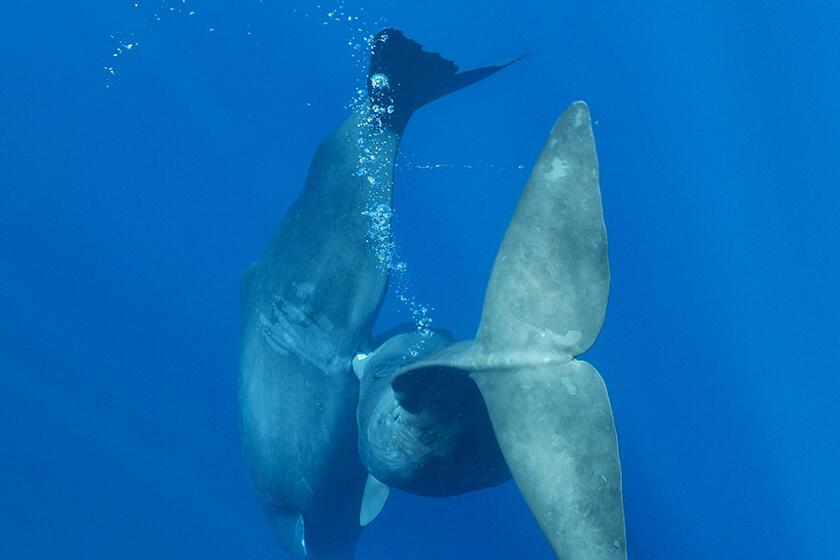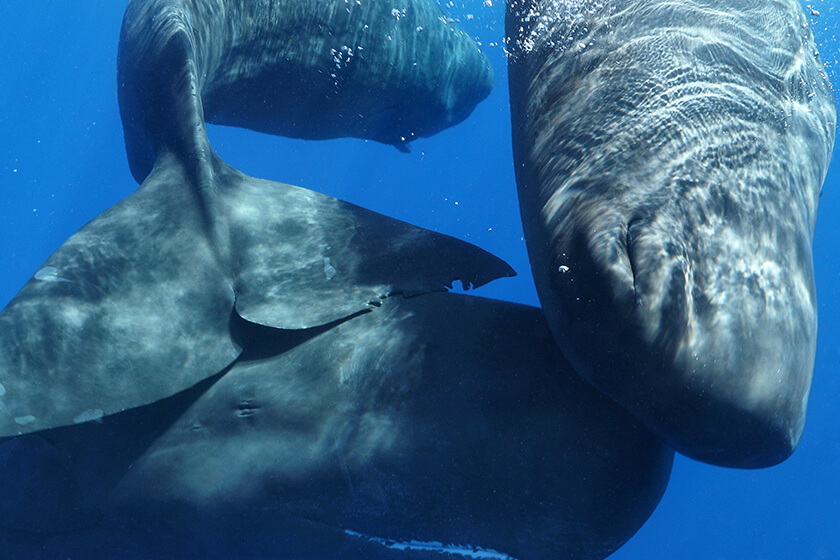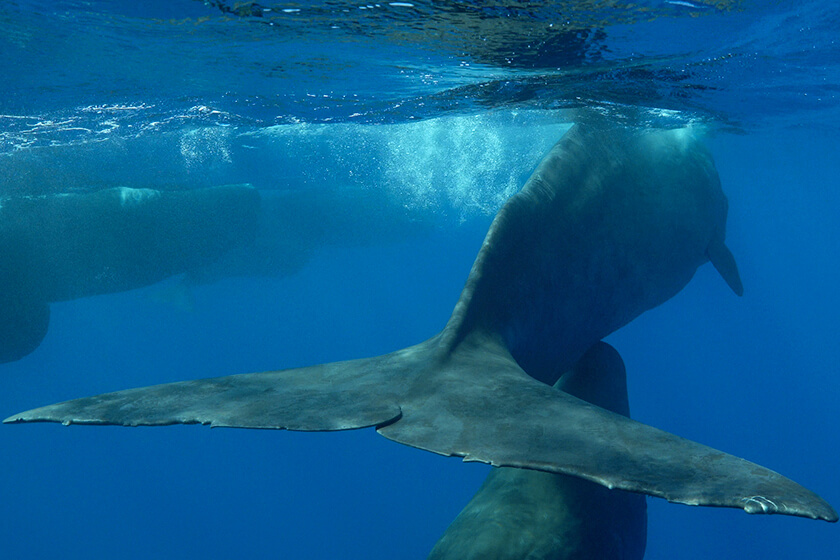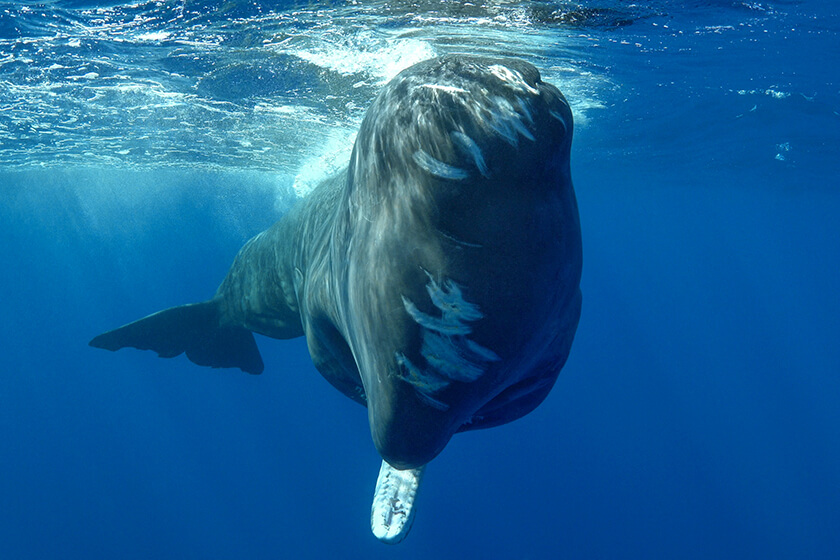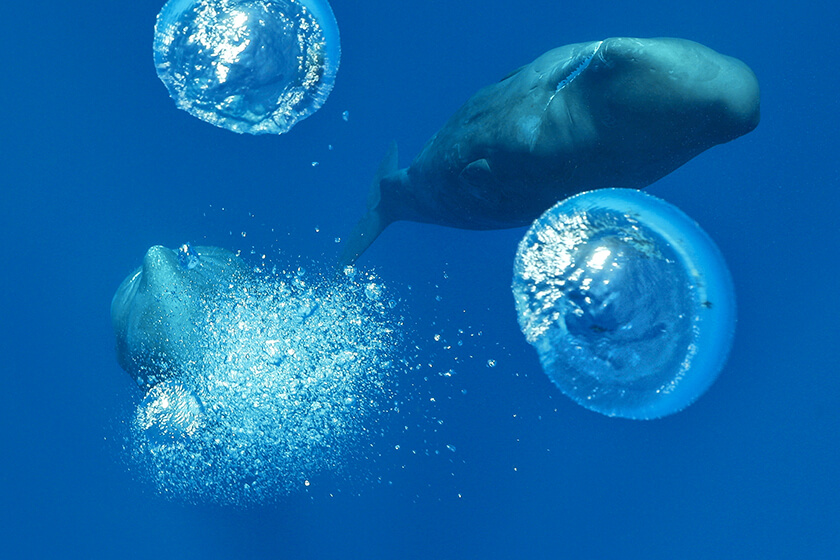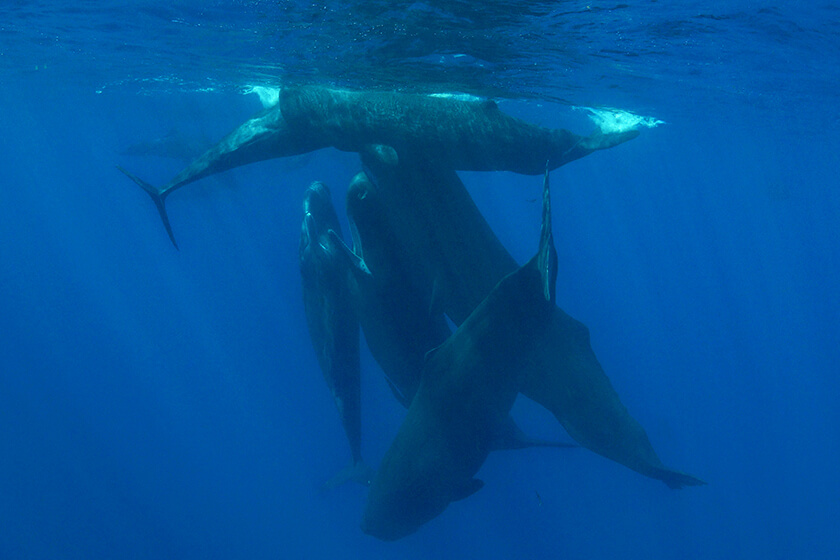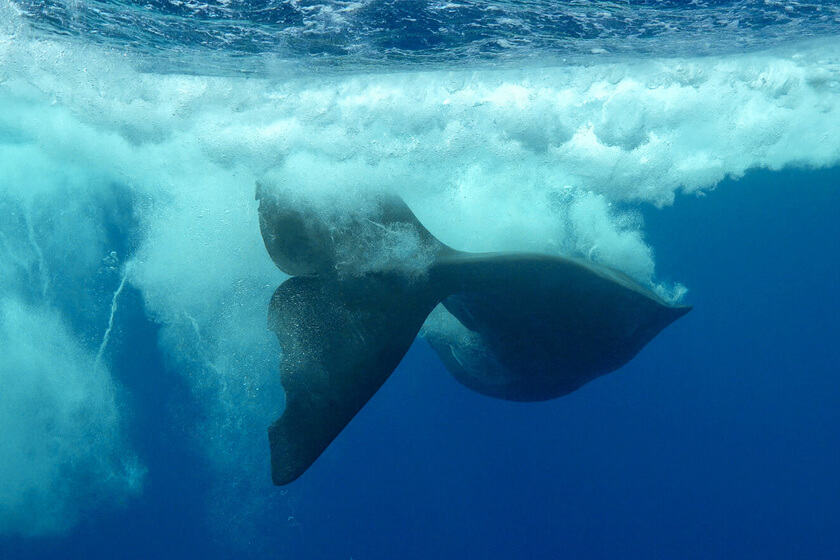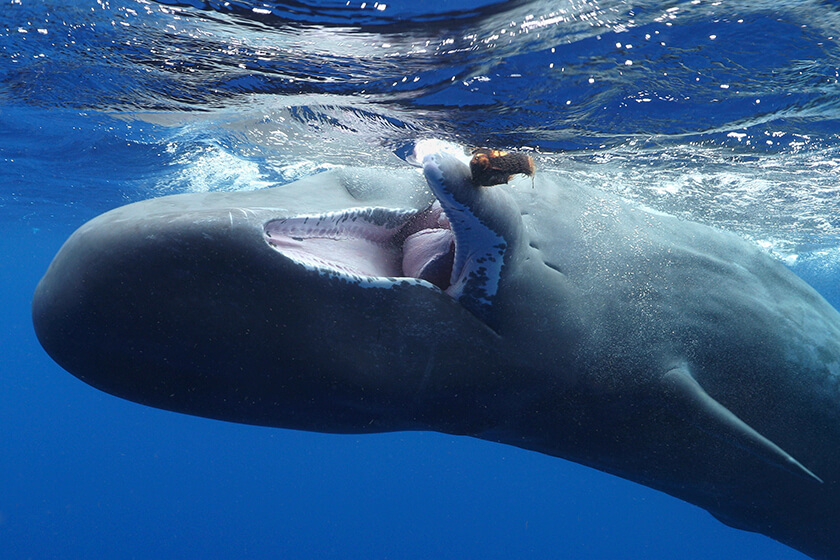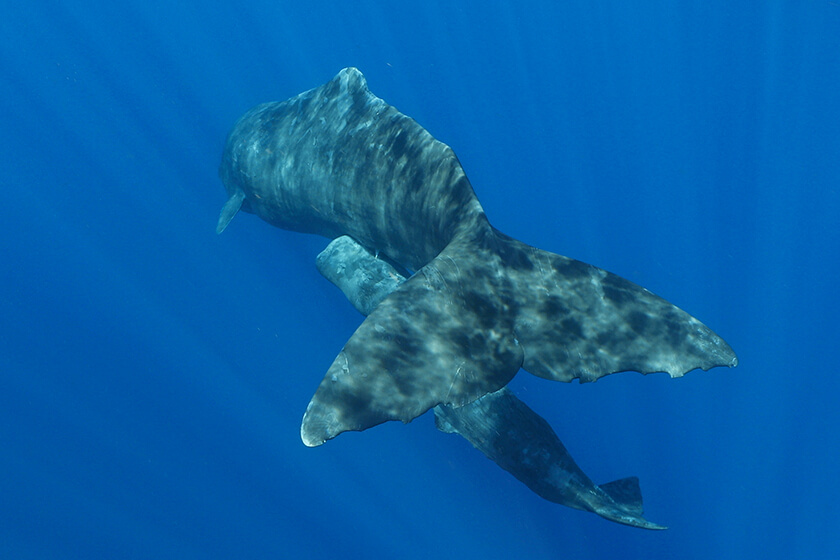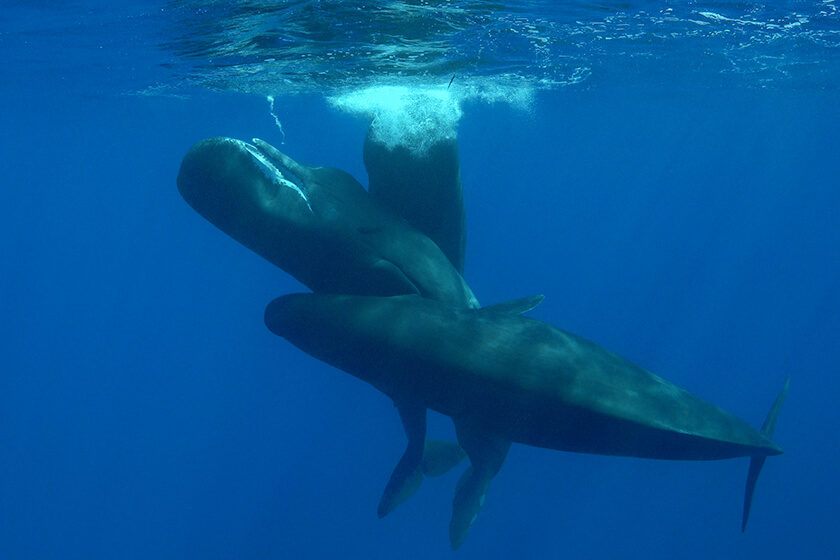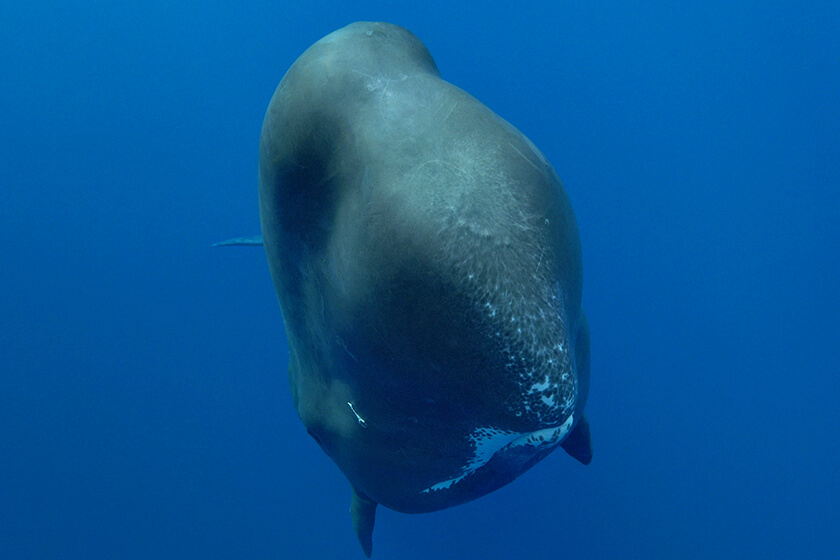Behaviors: Breaching
It is a spectacular sight to behold a multi-ton mammal launch itself out of the ocean, float airborne for a split second, and crash back into the water with a dramatic, whitewater splash. Many people are amazed to learn that sperm whales are excellent breachers.
There are a number of theories that exist to explain why whales breach, and it is likely that this behavior is due to a combination of reasons. It is postulated that they breach in order to rid themselves of parasites and remoras, demonstrate power and agility, or signal a shift in behavior– for example when they transition from a period of sleep to traveling mode. Some believe that whales leap out of the water simply for the fun of it.
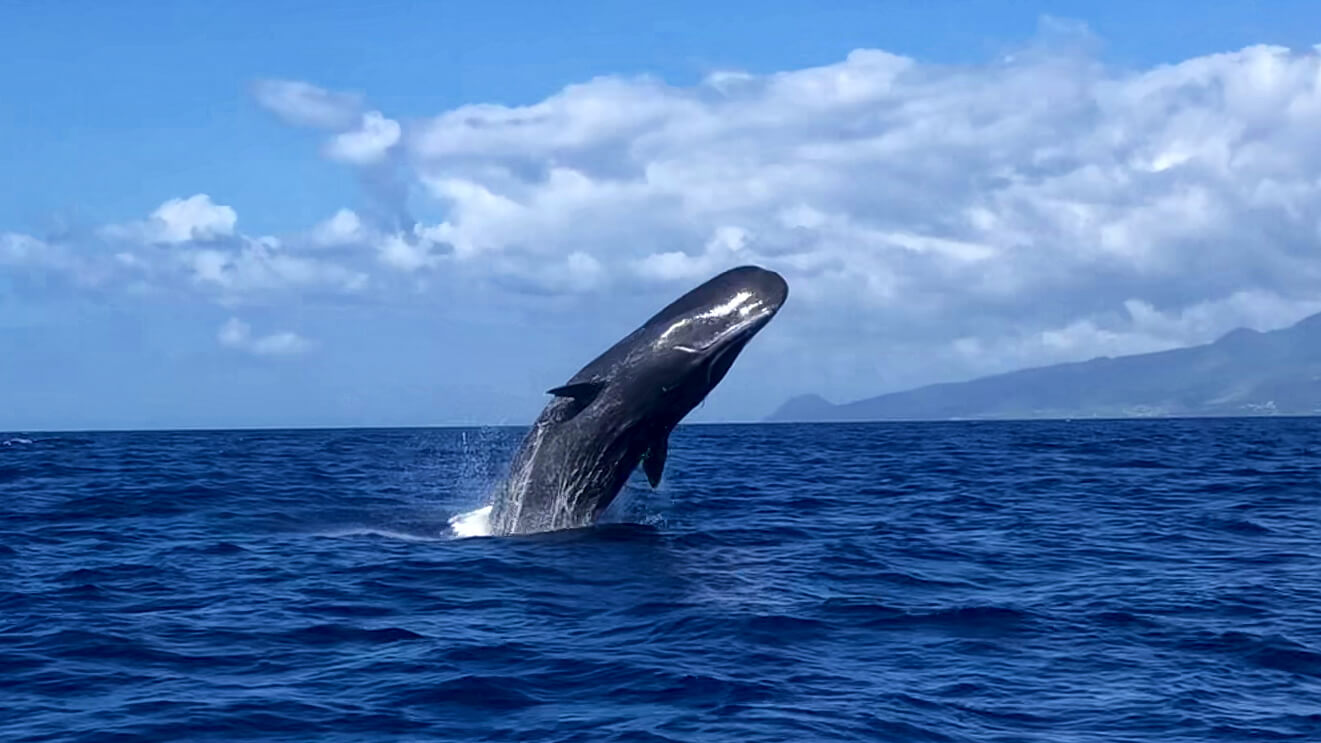
While most all of the adult whales in the social units breach, the juveniles more frequently engage in repetitive sequences of breaching, One of the more compelling explanations for this behavior, especially for the younger whales, is that bouts of highly exertive exercise build strength and enhance the development of myoglobin in their muscle tissue. Myoglobin is a protein that acts as an intracellular storage site for oxygen.
Deep-diving mammals contain 10 to 20 times more of this oxygen-carrying protein in their muscles than humans. These elevated levels of myoglobin develop as the whales mature and serve to increase their breath-hold capacity, enabling them to make sustained, extended dives. This supports the young whales’ ability to successfully forage at depths beyond 6,000 ft where their food sources reside. In addition to being a fun activity, breaching may indirectly contribute to their ability to independently nourish themselves.
As with other species of whales, a shift in the speed and direction of the wind appears to stimulate breaching behavior. At times we have observed multiple sperm whales begin to breach in unison during an abrupt and marked shift in the wind conditions. When they leap out of the water, whales typically jump against or into the wind.


